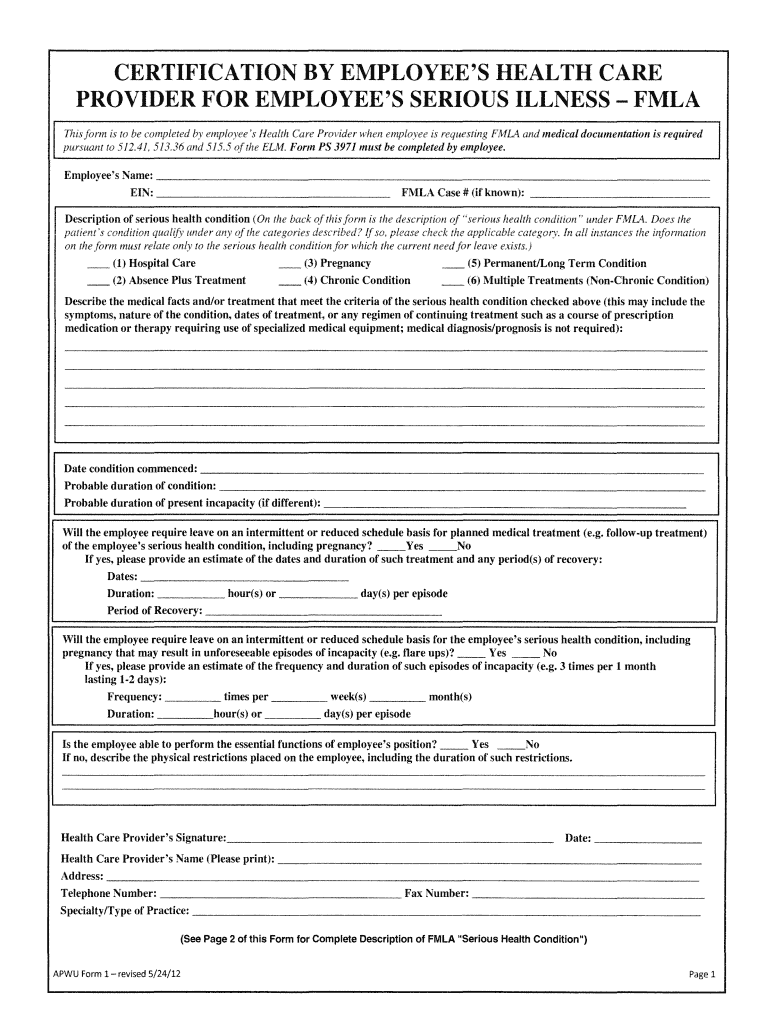5 Ways to Handle FMLA Paperwork Delays by Employers

Understanding FMLA Paperwork Delays

The Family and Medical Leave Act (FMLA) entitles eligible employees to take unpaid, job-protected leave for specified family and medical reasons, without losing certain health benefits. However, delays in FMLA paperwork processing can lead to stress for employees and potential legal issues for employers. Here’s how employers can address these delays effectively:
1. Streamline Communication

Timely communication is crucial in managing FMLA leave requests. Here’s how employers can enhance the process:
- Designate a Point of Contact: Have a dedicated FMLA coordinator to handle all related inquiries. This person will be responsible for:
- Answering employee questions regarding FMLA eligibility and requirements.
- Ensuring that paperwork is completed and submitted promptly.
- Implement a Communication Plan:
- Inform employees about the FMLA process when they start employment.
- Send reminders when employees’ FMLA leaves are about to expire or need recertification.
2. Automate and Digitize Processes

Modern technology can significantly reduce the time and errors associated with paper-based FMLA processing:
- Use HR Management Software: Implement software that can track leave requests, manage deadlines, and automate notifications:
- Automate the generation and distribution of forms and reminders.
- Integrate with medical certification systems for electronic document submission.

3. Educate Employees and Managers

Education is key to reducing paperwork delays:
- Conduct Training Sessions: Offer training sessions on:
- How to correctly fill out FMLA forms.
- Understanding employee rights and responsibilities under FMLA.
- Regular Updates: Keep the workforce informed about any policy changes or new forms that might affect FMLA leave:
- Hold informational sessions or webinars when there are changes in FMLA regulations.
4. Monitor and Adjust the Process

Continuous improvement is necessary for any administrative process:
- Set up Performance Metrics: Evaluate the effectiveness of your FMLA process by:
- Tracking time from leave request to approval.
- Assessing the number of rejections or requests for additional information.
- Feedback Loops: Regularly solicit feedback from employees and managers to identify bottlenecks and areas for improvement:
- Conduct surveys or focus groups to gather insights.
5. Plan for Contingencies

Even with the best systems in place, unexpected issues can arise:
- Create Backup Plans: Develop strategies to handle:
- Key personnel being unavailable due to leave or unforeseen circumstances.
- Technology failures or disruptions in the digital process.
- Cross-Training: Ensure multiple staff members are trained to handle FMLA processing to avoid single points of failure:
- Offer training sessions where different employees learn each other’s roles.
By implementing these strategies, employers can minimize FMLA paperwork delays, reducing administrative burdens and ensuring compliance with legal obligations. This approach fosters a healthier work environment where employees feel supported during times of need, ultimately leading to increased productivity and employee retention.
What are the consequences of not processing FMLA requests on time?

+
Not processing FMLA requests in a timely manner can lead to legal action by employees, financial penalties, and could damage the company’s reputation for compliance and employee support.
Can automating FMLA processes really help?

+
Yes, automation can streamline processes, reduce errors, and ensure timely notifications and reminders, thereby enhancing compliance and reducing the administrative load.
How can employees ensure their FMLA requests are processed quickly?

+
Employees can expedite their FMLA processing by ensuring all forms are correctly filled out, submitting medical certifications promptly, and maintaining open communication with the HR department.
What if I need FMLA leave but the employer delays or refuses the paperwork?

+
If your employer delays or refuses to provide FMLA paperwork, document your efforts, contact your state’s labor department, or seek legal advice to understand your rights and how to enforce them.